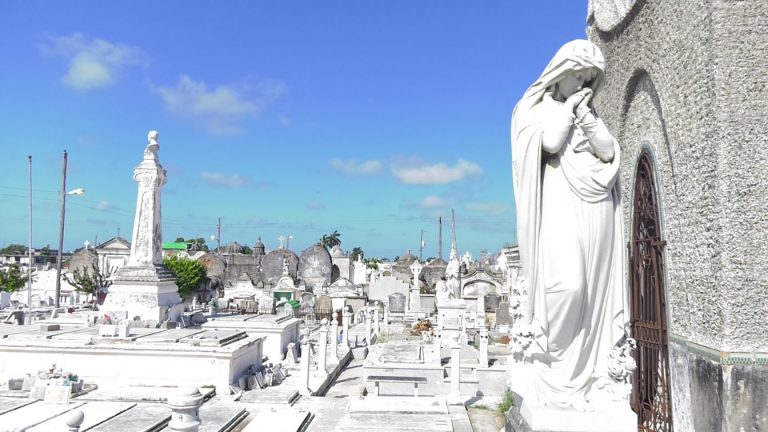By Lourdes María Mazorra López
Reservoir of a rich cultural heritage, an integral part of the life of the city since its emergence, the General Cemetery of Camagüey combines the being / thinking in dissimilar historical contexts of those who have inhabited and inhabit this more than 500 years city.
The necropolis is the extension – stopped and at the same time changing – of a city whose original forms have mutated, and at the same time they have been immortalized in architecture, art, history, legends and traditions of the city of dead, where pain and human feeling in its infinite forms, allowed the perpetuity of certain essential elements for our future.
Among them, their artistic and architectural values, numerous sculptures that correspond to different styles, mainly to the eclectic style, with a marked neoclassical influence; various types of crosses, lanterns and tombs built with marble and granite; besides of the literary compositions immortalized in the epitaphs, like the epitaphs of Dolores Rondón, possibly the most known.
But beyond this legitimated patrimony as faithful exponent of certain cultural tendencies; In my opinion, the true indispensable character of the necropolis of the city is in the imprint of generations that, from anonymity, and parallel to the “pure” architectural development, built an “other” cemetery devoid of high values, “but with a symbolic and sentimental load, valid at the time of conservation, both for the imperishable monument due to the presence of some personalities and events, as the simple symbol of respect and love “(Mabel Chao …)
The genesis of the Camagüey cemetery dates back to the late XVIII century, when in 1790 the Cabildo was asked for a cemetery in the spaces corresponding to the churches of Santa Bárbara and Santo Cristo del Buen Viaje. But its construction achieves to execute in the XIX, with the adaptation of this space for cemetery of the city. It was blessed and opened to the public on May 3, 1814, in what is now known as the first section.
After its inauguration several extensions took place, depending on the demographic and epidemiological growth of the town. The current cemetery was thus formed, the oldest in the country that is still performing obituaries in its entirety.
All these conditions, the exceptional and relevant of its values, make it one of the cultural sites to be preserved by the city; where, in addition, are concentrated ” a plurality of authentic, attractive and cultural components, not found anywhere in the region and serves as a reference center for historians, researchers and for the people in general” (Isabel)
Photo: Maylen Rodríguez
Translated into English by José Carlos García Cruz






